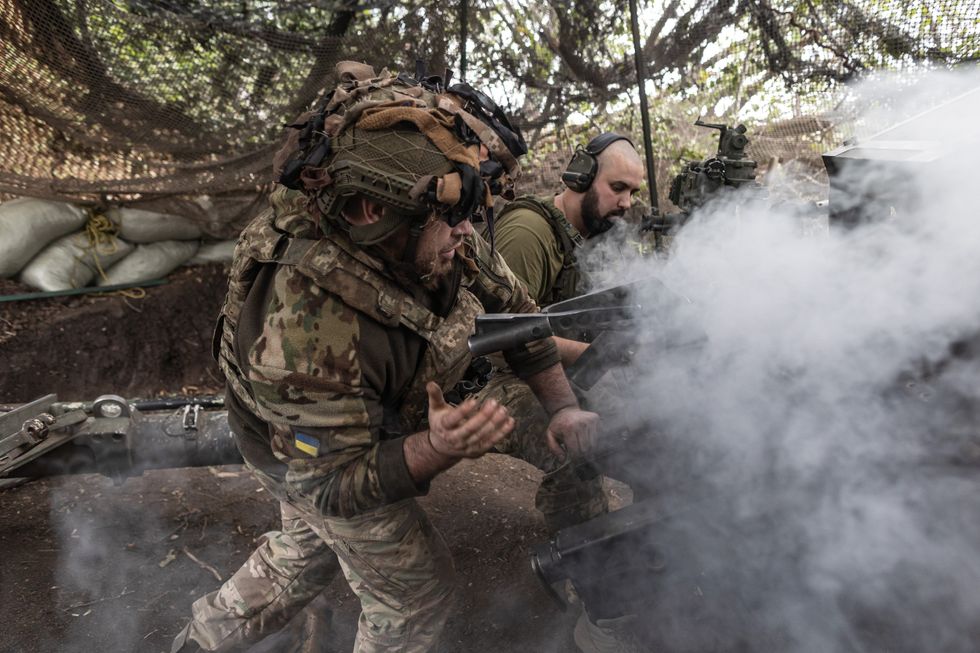Politics
NATO Responds Strongly to Russia’s Drone Incursion in Poland

On September 9, 2023, a significant escalation occurred when approximately 20 Russian drones entered Polish airspace, prompting immediate military responses from NATO allies. This incident, initially downplayed by Moscow as an accident, is increasingly viewed by Western leaders and security experts as a deliberate attempt to test NATO’s resolve against potential Russian aggression.
In the wake of the incursion, NATO swiftly announced plans to enhance its eastern defenses. Germany expanded its air policing operations over Poland, while France dispatched three Rafale fighter jets. The Netherlands contributed two Patriot air defense systems and counter-drone technology to bolster Poland’s defenses. Additionally, the Czech Republic pledged to send extra helicopters and up to 150 soldiers to assist in safeguarding Polish borders.
Context of the Incident
The Russian drones reportedly forced the temporary closure of several airports in Poland as Polish F-16 and Dutch F-35 aircraft engaged to neutralize some of the threats. NATO provided aerial refueling and command and control support during the operation. Following the event, Poland invoked Article 4 of the NATO Treaty, which allows member states to consult on collective defense when a country feels its territorial integrity is threatened.
The North Atlantic Council convened on September 10 to discuss the matter, unanimously condemning Russia’s actions. NATO Secretary General Mark Rutte characterized the incursion as “reckless and unacceptable,” affirming that the alliance would “defend every inch of NATO territory.” This sentiment was echoed by EU foreign policy chief Kaja Kallas, who indicated that evidence suggests the drone incursion was intentional.
Expert Analysis
General David Petraeus (Ret.), a former commander of U.S. Central Command, described the drone incursion as a “very significant episode.” He emphasized that such operations are not conducted without intent, stating, “These aren’t on autopilot… there is a pilot behind this.” He noted that one of the drones aimed for a major NATO logistics base, which underscores the seriousness of the threat.
“The NATO response was very impressive, in my view,” Petraeus stated, highlighting the rapid mobilization of allied air forces.
Petraeus pointed out that the swift reaction from NATO—evidenced by the deployment of air assets and the convening of the North Atlantic Council—signaled a robust commitment to collective defense. He suggested that this incident could serve as a catalyst for further strategic actions, including a comprehensive sanctions package against Russia by the U.S. and European allies.
The general also remarked on the evolving technological landscape of warfare. As drone technology advances, both sides are continually adapting. He noted Ukraine’s innovative approaches in utilizing drones for various combat roles, highlighting a significant arms race in aerial capabilities.
With Russian forces reportedly recruiting soldiers and deploying them to the front lines within 20 days, Petraeus underscored the challenges faced by Ukrainian forces. The rapid integration of recruits, often lacking adequate training, reflects Moscow’s desperate strategy to maintain its offensive operations, which have become increasingly reliant on drone warfare.
The implications of the drone incursion extend beyond immediate military responses. European leaders are reassessing their security strategies and are more conscious of the threat posed by Russia. The recent events have reportedly led to a renewed commitment from NATO countries to increase defense spending, with Germany planning to double its military budget over the next decade.
As the situation continues to evolve, the determination of NATO and its allies to respond decisively against Russian aggression remains paramount. The drone incursion serves as a stark reminder of the ongoing tensions in the region and the necessity for a united front among NATO member states.
-

 Health3 months ago
Health3 months agoNeurologist Warns Excessive Use of Supplements Can Harm Brain
-

 Health3 months ago
Health3 months agoFiona Phillips’ Husband Shares Heartfelt Update on Her Alzheimer’s Journey
-

 Science1 month ago
Science1 month agoBrian Cox Addresses Claims of Alien Probe in 3I/ATLAS Discovery
-

 Science1 month ago
Science1 month agoNASA Investigates Unusual Comet 3I/ATLAS; New Findings Emerge
-

 Science4 weeks ago
Science4 weeks agoScientists Examine 3I/ATLAS: Alien Artifact or Cosmic Oddity?
-

 Science4 weeks ago
Science4 weeks agoNASA Investigates Speedy Object 3I/ATLAS, Sparking Speculation
-

 Entertainment4 months ago
Entertainment4 months agoKerry Katona Discusses Future Baby Plans and Brian McFadden’s Wedding
-

 Entertainment4 months ago
Entertainment4 months agoEmmerdale Faces Tension as Dylan and April’s Lives Hang in the Balance
-

 World3 months ago
World3 months agoCole Palmer’s Cryptic Message to Kobbie Mainoo Following Loan Talks
-

 Science4 weeks ago
Science4 weeks agoNASA Scientists Explore Origins of 3I/ATLAS, a Fast-Moving Visitor
-

 Entertainment4 months ago
Entertainment4 months agoLove Island Star Toni Laite’s Mother Expresses Disappointment Over Coupling Decision
-

 Entertainment3 months ago
Entertainment3 months agoMajor Cast Changes at Coronation Street: Exits and Returns in 2025









